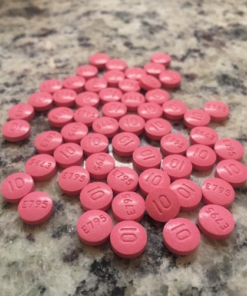What Is Ecstasy?
Ecstasy (MDMA, or 3,4-methylenedioxymethamphetamine) is an amphetamine analogue with both stimulant and hallucinogenic effects. Ecstasy is most commonly taken as a tablet or capsule; however, some people will snort a powder or swallow the drug in a liquid form.
What Does Ecstasy Do to the Body?
Many of MDMA’s effects are dose-dependent, meaning the amount of MDMA taken can have a significant impact on how the drug affects the body. Though substance purity and total dose vary wildly, previous estimates place most tablets between 50 mg and 150 mg; however, short of analyzing the contents in a lab, the dose contained in such an illicit product is anyone’s guess.
An unexpectedly high dose can cause significant adverse effects. Adding to the danger, people using the drug often take a follow-up dose to prolong the comedown, further risking their health.
Additionally, ecstasy tablets, especially those sold online on the “dark net,” are more potent than ever before. According to a European study, while tablets in the ’90s and early 2000s average about 50 mg to 80 mg, the average dose of an ecstasy tablet on the current market is now 125 mg. Some “super pills” have been marketed, with doses ranging between 270 mg and 340 mg.
Side effects that may occur from MDMA use, which may be more intense and likely to occur with higher doses, include:
- Mild depersonalization.
- Disorganized thoughts.
- Restlessness.
- Headache.
- Jaw clenching.
- Teeth grinding.
- Stiffness in muscles and joints.
- Nausea.
- Loss of appetite.
- High blood pressure.
- Chills.
- Sweating.
- High body temperature.
- Loss of consciousness.
- Seizures.
Is Ecstasy Ever Deadly?
Many mistakenly view ecstasy as a benign recreational drug or a nonaddictive, feel-good substance. However, there have been several reports of MDMA-related deaths.
One particular danger to ecstasy users is hyponatremia, an abnormally low level of sodium in the blood. Because people often dance for long periods in warm conditions like a club or party while using ecstasy, dehydration is common. Ecstasy users tend to combat dehydration by drinking a lot of water.
Though there are several potential underlying physiological mechanisms at play, excessive water consumption coupled with drug-induced alterations in free water excretion by the kidneys results in a dilutional effect on serum sodium levels. In severe cases, the subsequent shifts of water from the serum compartment to intracellular spaces can result in brain swelling, mental status changes, seizure, coma, and death.
Milder symptoms of hyponatremia may include:9
- Headache.
- Confusion.
- Fatigue/lethargy.
- Muscle weakness.
- Muscle cramps.
- Nausea.
- Vomiting.
Adding to the dangers of altered fluid balance and hyponatremia is the risk of severe increases in body temperature (hyperthermia). Animal studies suggest that ecstasy may impair thermoregulation, or the body’s ability to regulate its temperature.
MDMA use is commonly associated with increased physical activity for extended durations in particularly hot environments such as a packed dance club—a perfect formula for a dangerous spike in body temperature.
Untreated hyperthermia may lead to a life-threatening condition called rhabdomyolysis, wherein muscles begin to break down and spill their protein contents into the bloodstream. Hyperthermia may also further contribute to electrolyte imbalances and fluid shifts, which can lead to kidney failure or swelling of the brain.
Effects
The effects of MDMA should take around 30-60 minutes to begin depending on whether it’s snorted or swallowed. The main effects are:
- Increased energy/alertness
- Euphoria
- Increased empathy or feeling ‘loved up’
- Increased appreciation for music
- Mild hallucinations
- Increased temperature
- Jaw clenching, teeth grinding, tongue and cheek chewing (gurning)
- Nausea/vomiting
- Erectile dysfunction/inability to orgasm
Dosage
Dosage will depend on a number of factors including tolerance, gender and how it’s taken (either nasally or orally). This is a guide only.
Recommended dose = 50mg + your bodyweight in kilos
E.g. if you weigh 70kg the recommended dose is 50 + 70 = 120mg
If you are going to redose, it should be no more than half the original dose and be taken 2-3 hours in.
Harm Reduction Advice
- Start low and take it slow. Remember you do not know what chemicals are in your MDMA.
- Avoid mixing MDMA with other drugs including alcohol. Mixing drugs will put a greater strain on your body and make your comedown worse.
- If you’re dancing remember to sip 1 pint of water per hour to avoid dehydration. Take breaks from the dancefloor to avoid heat stroke.
- Always weigh your dose. The best way of doing this is using a milligram scale. Don’t take random amounts on a dark dancefloor.
- If someone is overheating, take them to a cooler, calmer place. Remove some clothes and try to cool them down with water.
- If someone collapses or becomes unresponsive, seek immediate medical attention. You will not get in trouble for doing this.
- Avoid taking MDMA more regularly than once every three months. This will allow time for your body and brain to fully recover between sessions.
- Do not attempt to get in the car and drive. Make sure you find a safe alternative.
| Quantity | 30 pills ($8/pill), 60 pills ($8/pill), 100 pills ($8/pill), 150 pills ($8/pill), 200 pills ($8/pill) |
|---|
Be the first to review “Ecstasy (MDMA or Molly) 50mg” Cancel reply
Related products
Uncategorized
Uncategorized
Uncategorized
Uncategorized
Uncategorized
Uncategorized
Uncategorized
Uncategorized
























Reviews
There are no reviews yet.